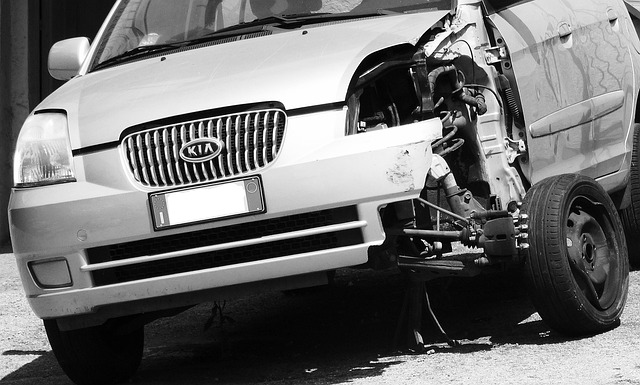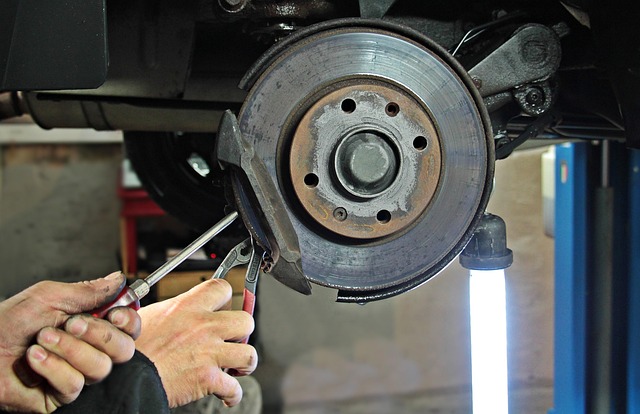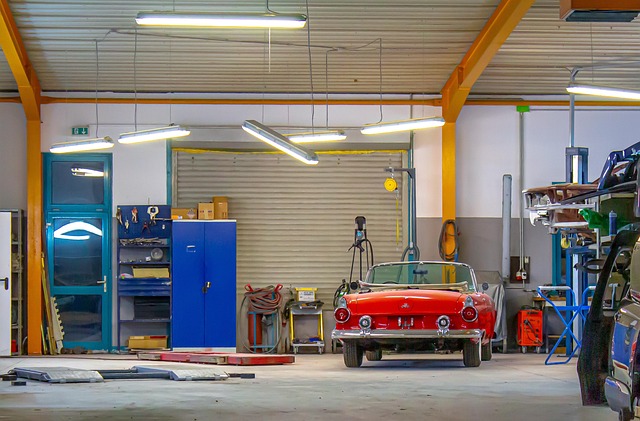Efficiently Compare Car Body Repair Services: A Comprehensive Guide
When choosing a car body repair service, consider one that specializes in modern vehicle needs, offe…….
In today’s fast-paced world, the automotive industry continues to evolve, driven by consumer demands for safer, more efficient, and aesthetically pleasing vehicles. At the heart of this evolution lies a critical yet often overlooked aspect: car body repair service. This intricate process involves the meticulous restoration and reconstruction of vehicle bodies, ensuring they meet safety standards while restoring their aesthetic appeal. The article aims to provide an in-depth exploration of car body repair services, delving into its various facets, global impact, technological innovations, regulatory frameworks, and future prospects. By the end, readers will gain a comprehensive understanding of this essential automotive service and its role in shaping the industry.
Car body repair service encompasses a wide range of techniques and processes designed to restore damaged or deteriorated vehicle bodies to their original condition or enhance their appearance. It involves skilled technicians who employ specialized tools, equipment, and materials to achieve precise results. The core components include:
Body Panel Repair: Involves fixing or replacing damaged body panels such as fenders, doors, hoods, and trunks. This includes straightening bent metal, patching dings and dents, and ensuring seamless fit upon completion.
Painting and Refinishing: A critical step that requires skilled painters to apply new paint coats, matching the original color specifications precisely. Proper preparation, including surface cleaning, priming, and sanding, ensures a durable finish.
Structural Repair: Addressing issues related to the vehicle’s frame and chassis, ensuring structural integrity. This may involve replacing damaged components or realigning sections to maintain proper vehicle dynamics.
Collision Repair: The most common application, collision repair focuses on restoring vehicles damaged in accidents. It requires technicians to assess and disassemble affected parts, perform necessary repairs, and then reassemble the body, ensuring pre-accident condition.
Historically, car body repair services have evolved alongside automotive technology, with significant advancements during World War II when metal fabrication techniques were adapted for vehicle restoration. Today, it plays a vital role in the automotive aftermarket, catering to both personal vehicles and commercial fleets.
Car body repair services exert a substantial global influence, with varying trends and practices across regions. The market is influenced by factors such as economic growth, consumer preferences, and regulatory frameworks:
North America: Known for its stringent safety standards, the United States and Canada have well-established car body repair industries. Advanced technologies and a strong focus on precision craftsmanship define this region’s services.
Europe: With a high density of automotive manufacturing, Europe presents a robust market for body repair. The adoption of electric vehicles (EVs) in recent years has led to specialized repair techniques catering to unique EV body structures and battery packs.
Asia Pacific: This region, particularly countries like Japan and South Korea, boasts a culture of meticulous craftsmanship, translating into highly skilled body repair technicians. Rapidly growing economies have also fueled the demand for affordable yet quality repairs.
Emerging Markets: Countries in Latin America, Africa, and parts of Asia are witnessing increasing awareness about vehicle maintenance, driving growth in car body repair services. Local entrepreneurs are adopting international best practices to meet rising demands.
The car body repair service market exhibits dynamic economic characteristics, influenced by several key factors:
| Market Factors | Description |
|---|---|
| Demographic Shifts | Changing demographics, such as an aging population, impact vehicle ownership patterns. Older vehicles require more frequent repairs, creating a consistent demand. |
| Economic Growth | Rising disposable incomes lead to increased spending on personal vehicles, including maintenance and repair services. |
| Vehicle Fleet Turnover | Commercial fleets, such as taxi companies and rental car agencies, undergo regular turnover, ensuring continuous business for body repair shops. |
| Safety Regulations | Stringent safety standards mandated by governments drive the need for quality repairs, creating a favorable market environment. |
| Technological Advancements | Innovations in materials and repair techniques enable faster, more efficient, and cost-effective repairs, attracting price-conscious consumers. |
The global car body repair service market was valued at USD 153.7 billion in 2020 and is projected to grow at a CAGR of 4.8% from 2021 to 2028 (Source: Grand View Research). This growth is driven by factors like the increasing number of vehicles on the road, rising demand for aesthetic enhancements, and the need for regular maintenance.
The automotive industry’s embrace of technology has significantly transformed car body repair services, leading to enhanced efficiency, precision, and customer satisfaction:
Computer-Aided Design (CAD) and 3D Printing: CAD software allows technicians to design and visualize repairs accurately. 3D printing enables the rapid production of custom parts, reducing lead times and costs.
Robotic Welding: Automated welding systems offer increased precision and consistency in metal fabrication, ensuring stronger and more uniform bonds.
Laser Technology: Lasers are used for precise cutting, welding, and surface treatment, resulting in cleaner and more accurate results.
Advanced Paint Technologies: Water-based paints and electrostatic painting systems reduce environmental impact and provide consistent coating.
Digital Imaging and Virtual Repair: Advanced imaging techniques enable technicians to capture detailed vehicle damage, facilitating remote consultations and repair estimates.
Regulatory frameworks play a crucial role in maintaining the quality and safety of car body repair services. Several key policies shape this industry:
Vehicle Safety Standards: Governments worldwide have implemented stringent safety regulations that dictate the minimum standards for vehicle construction, including body integrity and structural stability. Repairs must adhere to these standards.
Environmental Regulations: Many countries have laws governing the disposal of automotive waste and the use of environmentally friendly materials and practices in repair processes.
Licensing and Certification: Professional associations and government bodies often require technicians to obtain licenses or certifications, ensuring a certain level of skill and knowledge.
Consumer Protection Laws: These protect consumers from fraudulent practices and ensure fair pricing for services rendered.
Despite its significance, the car body repair service industry faces several challenges that hinder its growth and impact:
Skill Shortage: The high level of skill required in body repair can lead to a shortage of qualified technicians, particularly in regions with limited training programs.
Cost of Technology: Adopting advanced technologies and equipment can be expensive, making it challenging for smaller repair shops to stay competitive while offering quality services.
Environmental Concerns: The industry’s traditional reliance on toxic chemicals and materials has raised environmental issues. Transitioning to eco-friendly alternatives is a work in progress.
Customer Trust: Rebuilding trust after an accident or significant repair can be challenging, as customers may have concerns about the quality of workmanship and parts used.
To address these challenges:
Training Programs: Governments and industry bodies should invest in training to develop a skilled workforce, including apprenticeships and specialized courses.
Incentives for Adoption: Tax breaks or grants can encourage repair shops to invest in advanced technology, making it more accessible to smaller businesses.
Transparency and Education: Raising consumer awareness about the benefits of quality repairs and transparent pricing practices can build trust.
Toyota Motor Corporation implemented a global collision repair standard to ensure consistent quality across its vehicle models and service centers worldwide. This initiative involved:
Standardized Procedures: Developing detailed repair procedures for various body panels and structural components, ensuring consistency in repairs regardless of the service center’s location.
Training Programs: Conducting extensive training programs for technicians to familiarize themselves with the standardized procedures and required tools.
Quality Assurance: Regular audits and quality checks at each service center to maintain adherence to the standards.
The result was a significant improvement in repair consistency, leading to higher customer satisfaction and reduced warranty claims related to collision repairs.
In response to stringent European environmental regulations, several repair shops in Germany adopted eco-friendly practices:
Water-Based Paints: Switching from solvent-based paints to water-based alternatives significantly reduced volatile organic compound (VOC) emissions.
Recycled Materials: Utilizing recycled metal and plastic parts for repairs, the shops minimized their environmental footprint while reducing costs.
Energy Efficiency: Implementing energy-efficient lighting and heating systems further lowered operational environmental impact.
These measures not only aligned with regulatory requirements but also attracted environmentally conscious customers, fostering a positive brand image.
The car body repair service industry is poised for continued growth and transformation, driven by several emerging trends:
Autonomous Vehicles: As autonomous driving technology advances, the nature of accidents will evolve, requiring specialized repair techniques for advanced vehicle systems.
Electric Vehicle (EV) Growth: With the increasing adoption of EVs, body repair shops must adapt to unique battery pack repairs and structural changes specific to electric vehicles.
Digitalization and Remote Services: The rise of digital technologies enables remote consultations, virtual estimates, and even some basic repairs, expanding access to services.
Sustainable Practices: There will be a growing emphasis on sustainable materials, eco-friendly practices, and circular economy principles in vehicle body repair.
Strategic considerations for repair shops include:
Diversifying Services: Expanding beyond traditional collision repair to offer aesthetic enhancements, custom modifications, and specialized services for niche markets.
Adopting New Technologies: Investing in advanced equipment and training to stay ahead of industry trends, ensuring the shop remains competitive.
Building Brand Loyalty: Focusing on customer service, transparency, and building trust to foster long-term relationships with clients.
Car body repair services play a pivotal role in the automotive industry, ensuring vehicles are safe, aesthetically pleasing, and reliable. This comprehensive overview has highlighted its global impact, economic significance, technological advancements, regulatory frameworks, and the challenges it faces. By embracing innovation, adopting sustainable practices, and prioritizing customer satisfaction, the industry can continue to evolve and meet the demands of a changing automotive landscape.
Q: How do I know if a car body repair shop is reputable?
A: Look for shops with proper licensing, certifications, and positive online reviews. Ask for references and ensure they stand behind their work with warranties or guarantees.
Q: What are the signs that my vehicle needs body repair?
A: Dents, scratches, misaligned panels, odd smells, or visible damage after an accident are indicators. If your vehicle’s appearance or performance changes unexpectedly, it’s best to get it checked.
Q: Can advanced technologies really improve repair quality?
A: Absolutely! Technologies like robotic welding and laser cutting provide precision and consistency, resulting in stronger and more accurate repairs. They also reduce human error, leading to higher-quality outcomes.
Q: Are there any environmental benefits to car body repair services?
A: Yes, many shops are adopting eco-friendly practices, using recycled materials, water-based paints, and energy-efficient systems. These measures help minimize the industry’s environmental impact.
Q: How can I save money on body repair without compromising quality?
A: Shop around for estimates, consider original equipment manufacturer (OEM) parts, and ask about discounts or promotions. Reputable shops should offer transparent pricing and work with your insurance provider if applicable.

When choosing a car body repair service, consider one that specializes in modern vehicle needs, offe…….

Certification is vital in the automotive industry, especially for car body repairs, as it guarantees…….

A skilled team, driven by technical expertise, passion for craftsmanship, and continuous learning th…….

Car body repair services offer a meticulous process to restore damaged vehicles to their former glor…….

Car body repair services restore vehicles post-accident, involving detailed assessments, frame strai…….

Modern car body repair service shops face challenges from intricate vehicle designs, advanced electr…….

In the evolving automotive sector, electric and hybrid vehicles present unique challenges for car bo…….

Selecting skilled technicians is vital for car body repair services aiming excellence. Ideal candida…….